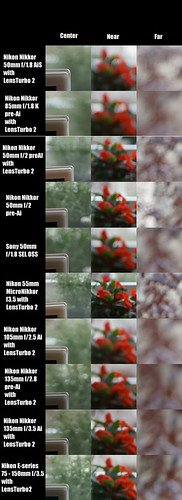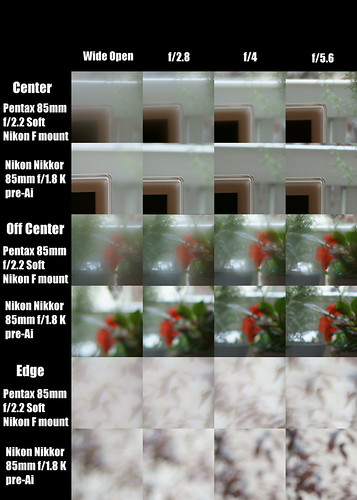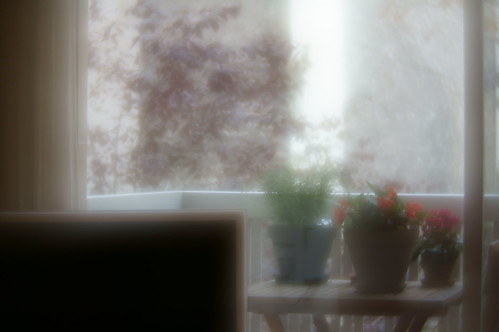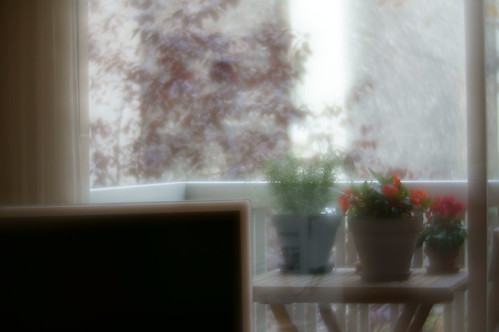As I'm still somewhat obsessed with the topic of "softness" and trying to learn what I can, I thought I'd take a look at comparing the optical "softness" rendered by the Pentax 85mm f2.2 SMC Soft to the Nikon Nikkor 50mm f/1.8 AiS and 85mm f/1.8 K pre-Ai with two Nikkor soft filters numbers 1 and 2.
Here is the comparison (as always, follow the link, find the all sizes images, and look at this at 100 percent to see everything there is to see). Please note that the second to last comparison should read "... Nikkor Soft 1". The comparison will make more sense.
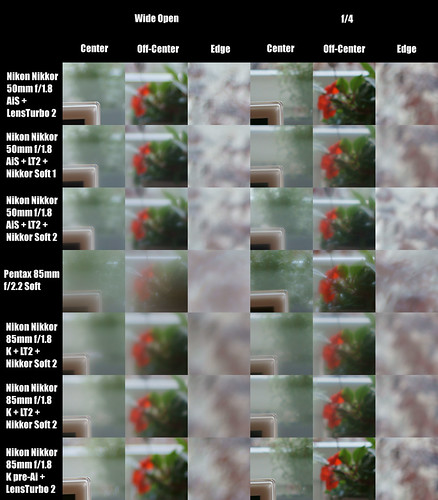
What I see is that the Nikon lenses with the Nikkor soft filters simply add softness to the image, just as we would expect. The number 2 Soft filter is, again as expected, gives a stronger softness than the number 1 filter. In terms of softness, the number 2 filter more closely approximates the Pentax lens when both lenses are shot wide open.
It may not be entirely clear by looking at the above comparisons that the Pentax 85mm f/2.2 SMC Soft distorts the image in ways that the Nikkors deliberately avoid. I should, however, be clear that changes in the aperture affects the "sharpness" of the subject focused on to a greater degree than it does out of focus areas around the edges.
Further, as previously noted, the depth of field of the Pentax lens does not appear to change with aperture changes. This behaviour is dramatically different from the Nikon lenses where the depth of field changes as the aperture changes. This difference in depth of field behaviour should be clear in the above comparison.
To illustrate what I mean when I say the Pentax lens distorts the scene, here are two photographs that show the difference between the Pentax 85mm f/2.2 SMC Soft and the Nikon Nikkor 85mm f/1.8 K pre-Ai with a Nikkor number 2 Soft filter mounted on the front. The level of "softness" is similar, but the way the images are rendered are very different.

Nikon Nikkor 85mm f/1.8 K pre-Ai at f/1.8
with Nikkor #2 Soft filter
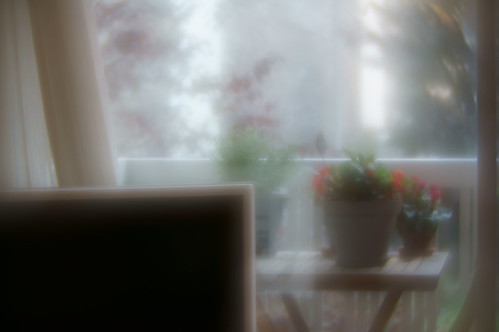
Pentax 85mm f/2.2 SMC Soft at f/2.2
Here is the comparison (as always, follow the link, find the all sizes images, and look at this at 100 percent to see everything there is to see). Please note that the second to last comparison should read "... Nikkor Soft 1". The comparison will make more sense.

What I see is that the Nikon lenses with the Nikkor soft filters simply add softness to the image, just as we would expect. The number 2 Soft filter is, again as expected, gives a stronger softness than the number 1 filter. In terms of softness, the number 2 filter more closely approximates the Pentax lens when both lenses are shot wide open.
It may not be entirely clear by looking at the above comparisons that the Pentax 85mm f/2.2 SMC Soft distorts the image in ways that the Nikkors deliberately avoid. I should, however, be clear that changes in the aperture affects the "sharpness" of the subject focused on to a greater degree than it does out of focus areas around the edges.
Further, as previously noted, the depth of field of the Pentax lens does not appear to change with aperture changes. This behaviour is dramatically different from the Nikon lenses where the depth of field changes as the aperture changes. This difference in depth of field behaviour should be clear in the above comparison.
To illustrate what I mean when I say the Pentax lens distorts the scene, here are two photographs that show the difference between the Pentax 85mm f/2.2 SMC Soft and the Nikon Nikkor 85mm f/1.8 K pre-Ai with a Nikkor number 2 Soft filter mounted on the front. The level of "softness" is similar, but the way the images are rendered are very different.



